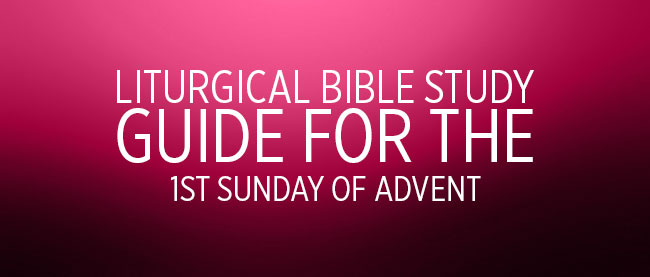Introduction
There is evidence from the mid-4th century on concerning some period of preparation for the Christmas-Epiphany celebration. Length and emphasis varied from place to place. Some regions kept a relatively long Advent (from St. Martin’s feast – November 11); others, a rather brief one. In Rome the season evolved to a four-week preparation whose focus was on the joyful celebration of the Lord’s Incarnation. In Gaul there was a longer, heavily penitential season emphasizing the Lord’s glorious advent at the end of time as Lord of history and judge of the universe. Roman practice from the 12th century, codified by the Council of Trent and enhanced by the greatly enriched lectionary of Vatican Council II, combines these different emphases. The violet vestments (with rose as an option on the 3rd Sunday) and the preaching of John the Baptist bespeak the penitential aspect which invites the people to reform. The Gloria is omitted, as during Lent, but for a somewhat different reason, as the official commentary on the revised Calendar notes: “So that on Christmas night the song of the angels may ring out anew in all its freshness.” On the other hand, there is a clear note of joyful expectation: The Alleluia is retained before the Gospel. There has been no mandatory Advent fast since the 1917 Code of Canon Law. The Ambrosian Rite in use throughout the area around Milan, Italy still observes a longer (6-week) Advent while the Eastern Rites in general observe a shorter “pre-feast” period before Christmas.
Advent is a time for looking both backward and forward. We look backward as we prepare to celebrate the historical birth of Jesus of Nazareth at Christmas. Before that birth people longed for the Messiah who would restore Israel to her former power. We identify with that ancient longing for restoration as we await Christ’s coming more fully into our lives and also as we await His Second Coming.
With that longing for restoration in mind, we recognize in Advent a time of preparation and anticipation. What we celebrate as having happened in the past points to what we anticipate is coming again. First, we recognize that Christ is born into our lives each day as we open ourselves to His grace and love. These moments of discovering birth in Christ are times when we can stand with the shepherds and hear glad tidings proclaimed. Advent is a season that prepares us to discover new birth happening over and over again for us in and thru Christ. We celebrate those birth times at Christmas. Second, we look forward in Advent to the culmination of Christ’s kingdom, when He will return in glory to fulfill the promise of wholeness as all creation responds to His healing presence. In our acclamation during the Eucharistic Prayer, we identify with this longing when we say “Christ has died, Christ is risen, Christ will come again,” or similar words in the other acclamations. Through the Holy Spirit, this new age has already begun, and this too we celebrate.
During the first period of Advent, the readings from the prophet Isaiah continually speak of God’s visitation, consolation and redemption of His people, while the corresponding Gospel selections portray Christ as the fulfillment of the prophetic promises.
1st Reading – Isaiah 63:16b-17, 19b; 64:2-7
This portion of Isaiah points toward the victory of Yahweh in a new heaven and new earth, to be reflected in a new Temple and new priesthood. The Jews did not suffer physically in Babylon, they were treated quite well. During their exile the Jews even lost their ability to speak Hebrew and instead adopted Persian Aramaic as their language. After the Jewish people returned from exile in Babylon, their nation and even their Temple continued to lie desolate. Surely the punishment of the people had gone on long enough. When would God come to restore the fortunes of His chosen people? This passage is a plaintive lament and cry for God to reveal His power and presence among the people and to intervene in the course of human events.
2nd Reading – 1 Corinthians 1:3-9
The busy port of Corinth had a lively and turbulent Christian community. Their first surviving letter from Saint Paul treats difficulties in the community reported to St. Paul (probably at Ephesus in A.D. 57) by their envoys, then answers various questions they brought to him. Today we hear the Greeting and Thanksgiving portion of Saint Paul’s
opening remarks.
Gospel – Mark 13:33-37
Mark’s gospel is the most compact of all the gospels, concentrating not on Jesus’ teaching but on the mystery of His person, the gradual way in which the disciples reach an understanding of Him which still remains hidden from the crowds. The paradox is that Jesus is acknowledged as Son of God by the Father and by evil spirits, and yet He is rejected by the leaders of the Jews and is even misunderstood by His own disciples.
As we celebrate a new liturgical year, we look forward to the arrival of our Lord. As we await the Lord’s coming, He warns us to always be on the alert.


